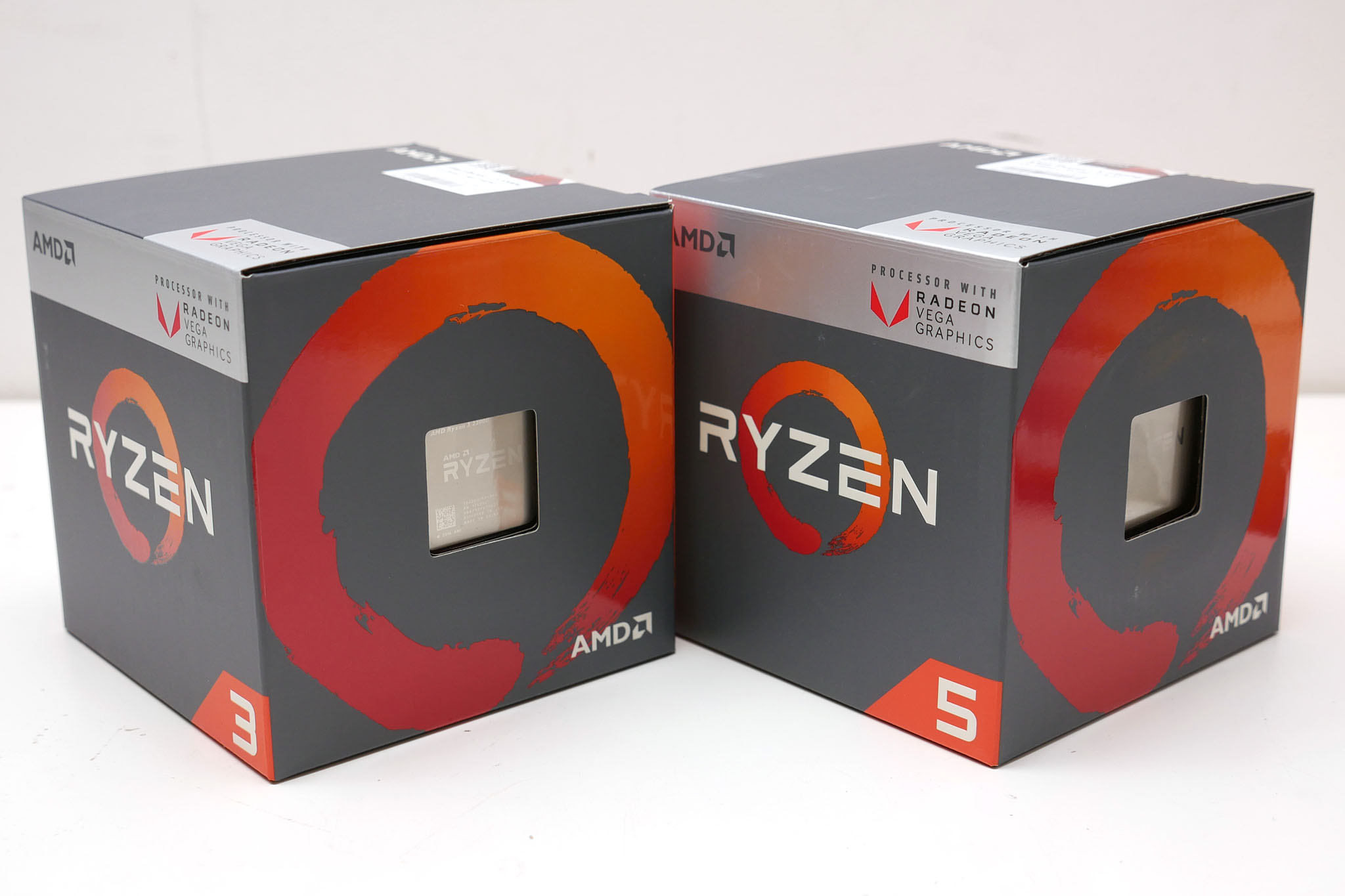AMD has been on a roll in the past few months. Their Ryzen processors were a huge hit, and performed much better than their counterparts from Intel, while costing lesser. They also introduced the RX Vega 56 and RX Vega 64, which became a huge success as well.
Now, AMD has attempted to combine the processing power of the Ryzen, with the graphical prowess of the Vega, into one economical package. An unofficial sequel to their previous APU series, which came with an integrated low-end GPU. The result is the Ryzen 5 2400G and the Ryzen 3 2200G.
The Ryzen 5 2400G is quad core, with eight threads and a clock speed of 3.6 GHz with boost clock speed of 3.9 GHz. The Ryzen 3 2200G, which is a more economical option, is quad core as well, but only with four threads. It has a base clock speed of 3.5 GHz with a boost clock speed of 3.7 GHz. Both of these processors have 4 MB of L3 Cache.
The Ryzen 2400G has a top GPU clock speed of 1250 MHz and the 2200G tops out at 100 MHz . The 2400G has 11 “Vega Graphic Cores”, 44 Texture Mapping Units and 16 ROP’s. The 2200G has 8 “Vega Graphic Cores”, 32 Texture Mapping Units and 16 ROP’s.
So how do these two hold up in terms of gaming performance ? The closest competitor to these two processors is the Intel Core i5 8400. Benchmarks reveal that the Intel cannot run modern games even at their lowest settings.
The 2400G can handle most modern titles at 1080p with an average of 30 FPS in medium settings. Since the 2200G isn’t as powerful, graphic settings will have to be lowered in order to achieve playable framerates. The fact of the matter is that, while you may not get the best out of your game, you will be able to play it on decent settings.


